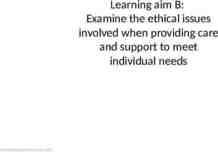Agenda Leadership over the week? Canadian Leader History of
19 Slides942.00 KB
Agenda Leadership over the week? Canadian Leader History of Leadership Project – moving forward Next Class / Questions
Evaluation Individual Work (Date 1; Date 2) 50% – Do 2 each worth 25% – Leadership/Mentor/Case paper – Progress exam Barry Bucks (hand-ins – 15) 15% Group Project / Event 35%
Leadership In small groups - “develop criteria about how to judge the perfect apple.” What did you come up with? What has this got to do with leadership?
Canadian Leader Volunteers to discuss their leader?
Leadership 101 Leadership Trait Leadership Style Leadership Behaviour Contingency Theories LMX Cross-cultural; Political; Distributed;
Quick Trip Down Leadership Lane Traits Style Situation New Synthesis
Traits “Leaders are born not made” Intelligent EQ Initiative Self-assured Good health Above/below average height Upper Socio-economic level
Traits - Problems Ideal is impossible Traits so ill-defined that they are almost useless So many exceptions to the rule Implied - elite officer corps who have inherited characteristics
Leadership – All about “Style” Leaders who employ a given style are seen as more effective Authoritarian versus Participative Researched subordinates satisfaction, turn over, inter-group conflict Only explained at most 15% difference
Situational Leadership Contingency Theory Leader Followers Situation Weakness - too many variables confusing, fall back on our style
Transactional versus Transformational Styles Transactional Focus on task Sticks and Carrots Transformational Inspirational Individual consideration Intellectual stimulation Charismatic
New Synthesis Managers do things right Leaders do the right things Bennis & Nanus Daniel Goleman Jay Conger James Collins John Kotter Larry Bossidy Mark Sanborn Max Du Pree Kouzes & Posner Model the Way Inspire a Shared Vision Challenge the Process Enable Others to Act Encourage the heart
From the Case Chapter 11 (on web page) Prepare Q 1,2,3 on Case 1. Leadership is the power or ability to make things happen to achieve the goals of the organization. Drawing from the chapter and using examples from the case, describe the “sources of power” you think Kelsey Ramsden demonstrates most in her role as leader. What impact do you think her gender (in this traditionally male-dominated industry) might have on the effectiveness of these sources of power? 2. Ramsden demonstrates “visionary leadership”—she had a clear and compelling sense of the direction she needed to take Belvedere Place Development, as well as an understanding of the actions needed to get there successfully. Using the Vroom–Jago leader–participation model of leadership, identify which decision-making method you believe best fits Kelsey Ramsden’s situation when faced with changing her company’s business model. Provide examples to support your answer. 3. Would you describe Kelsey Ramsden as a “transformational leader”? Why or why not? What leadership traits do you think best describe Ramsden as a leader of Belvedere Place Development?
From the Real World I've just started a new job. Everyone is on board except one very negative employee. He is offended by whatever I ask of him and speaks with a rude tone when he talks to me. I am his boss, but I must note he hasn't had a boss in three years so I know this will be a power struggle of some sort. I am making some headway, but the way he talks to me needs to be corrected. What do I do?
Case Format 1. 2. 3. 4. 5. 6. Brief Summary Problem Statement Theories Three options Best Why Action Plan (30/6/2)
Class Culture How can we collectively work to achieve a high performance, leadership culture in this class? How would we know if we achieved it?
Elements of Strong* Culture Widely shared philosophy Concern for individuals Recognition of heroes Belief in ritual and ceremony Well-understood sense of the informal rules and expectations Belief that what You do is important to others * Meaning – a positive and productive culture
Commercial: Top 10 Leadership Books (Washington Post) 1. On Becoming a Leader, by Warren Bennis. "His message is, you can't be a leader until you know who you are. It's that simple," said Sattersten. "Once you know, you have amazing ability to lead successfully." 2. The Leadership Moment, by Michael Useem. "It's a book you read for the stories, not because you're looking for a solution," Covert told me. "I think the stories sit in the back of your mind, and when you reach a crisis situation -- which so many people are right now -- you can call on them." (And yes, I am related the author, he's my dad.) 3. The Leadership Challenge, by Jim Kouzes and Barry Posner. "It's the first book you read on leadership because it offers such a compelling model for thinking about leadership," said Sattersten. "You can use it as a basis for looking at everything else you encounter." 4. Control Your Destiny or Someone Else Will , by Noel Tichy and Stratford Sherman. The book, about Jack Welch's leadership at GE, is the story of "the great corporate turn-around story of the 20th century," said Sattersten. And not because GE was faltering when Welch took charge -- on the contrary, said Sattersten, GE at the time was running "an acceptably profitable business," and yet still Welch was able to implement major changes. The other books on their list are: Leadership is an Art, by Max De Pree The Radical Leap, by Steve Farber Leading Change, by John Kotter Questions of Character, by Joe Badaracco The Story Factor, by Annette Simmons, and Never Give In! Speeches by Winston Churchill.
Next Day Read Chapter 2 (one page summary) Follow the “two plus one” model – Two interesting things from reading / one reflection from last class Come with a list of Team members (and starting on a signed contract)
























